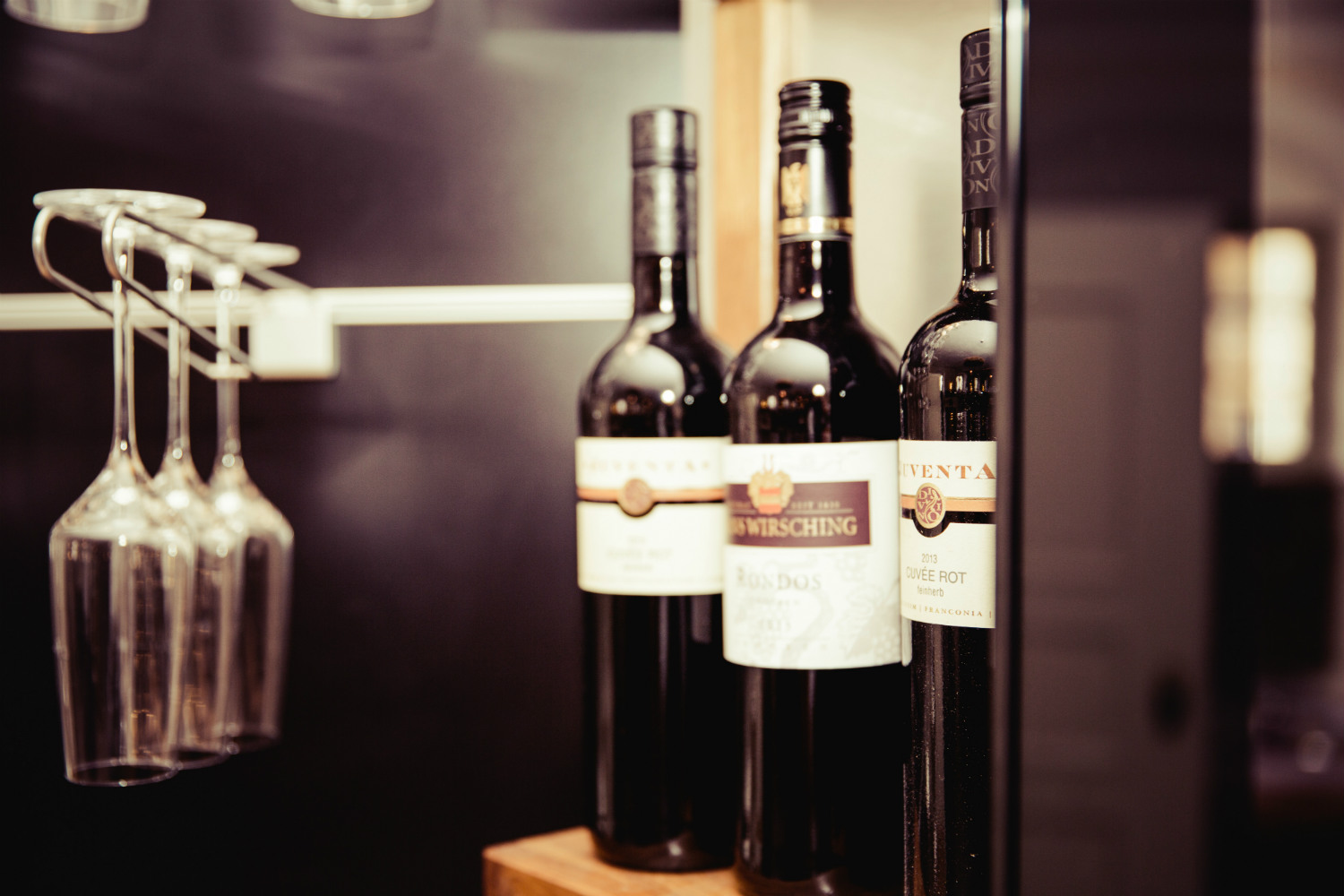
Moving wine is a delicate process. Wine has unique properties unlike any other item you might move. First, wine is perishable and can lose the subtleties of its intended flavors if you do not transport it properly under the right climate conditions. Second, wine is contained in a bottle, so breakage is also a concern. Whether you are moving a case of wine or you have a wine cellar of spirits with considerable value, you must take precautions to ensure the integrity of your precious elixir on its journey to your new home.
The Cost of Moving Your Wine Collection in San Francisco
Finding a cost-effective way to ship a significant wine collection during your move is nearly impossible. A 12-bottle case of wine weighs around 35 pounds, so shipping the collection is expensive. In addition, UPS and FedEx only allow licensed shippers to send wine.
There are professional wine shippers with refrigerated trucks for large collections, but the prices are through the roof, and those specialized wine movers do not move your couch and mattress. Using a separate moving company to transport a large wine collection begins at a cost of about $10 a case for a local move, which usually requires a 20-case minimum, to $3,000-$5,000 for a climate-controlled move across the country. A cross-country trip usually takes a week. Airfreight will cost even more, about $20,000 for 50 cases.
Appraising and Insuring Your Wine Collection before Transporting It
Most homeowner insurance policies cover your wine collection, but check your coverage before you ship it from your old residence to your new one. Understanding the value of your collection is a necessity, and might require an appraisal by a professional to ensure you have the proper value listed on your policy.
“Instead of picking one randomly, you want to get in touch with a certified and reputable wine appraiser who will evaluate the current market value of your wine and give you an accurate appraisal,” relocation expert Ethan Greenfield told moving.tips.
You can find a wine appraiser by contacting a local wine distributor, wine store, your insurance company, or you can find one at appraisers.org.
Creating an Inventory for Your Wine Collection before Moving
Appraising and insuring your collection are the first two steps to ensure your wine collection’s safe transition to your new home. You must also must create an inventory, which includes the wine name, year, vintage, and most importantly, a photograph of the bottle with the visible details showing.
“If you plan to use the services of a specialized wine transporter, the company will also do a packing inventory, in which case the two lists should be identical,” Greenfield continued. “As a matter of fact, it’s best to use that wine collection inventory to make some important decisions; that is, to decide if it’s better to sell a part of the wine collection or even give away some of the bottles to dear family members or good friends.”
Consider the Temperature before Moving Your Wine
Some moving companies won’t touch wine because it is a perishable, and can be an expensive one, so the liability is often huge. However, those that do move wine are equipped to handle it, and San Francisco weather is usually at a temperature that will not damage the product. Moving the collection in the spring or fall is best. Although, if the temperature in the area moves to an extreme and gets too hot or too cold, regardless of the season, a climate-controlled truck is important. If you have a small collection, you can save money and heartache by moving your cases of wine in your personal vehicle.

“When you get your bill of lading (BOL) from the moving company, it should state the temperature that the truck must provide,” moving industry expert Pamela Smith told mymovingreviews.com. This document means that the moving company who has issued it is obliged to keep the necessary, stated temperature in the truck, and thus your wine collection will be well-protected during moving.”
To maintain the wine’s taste and to prevent bottles from losing its seal, the optimal temperature is 55 degrees Fahrenheit. Vintage red wines will not maintain their flavor if the temperature shifts greatly from that temperature during the move. White wines are less delicate.
The temperature of the wine should never exceed 75 degrees. At 80 degrees, the heat causes expansion inside the wine bottle. This could cause liquid to seep out around the cork or push the cork out of the bottle, breaking the seal and causing oxidation. After 18 hours in 86-degree temperatures, wine loses its brightness, changing to a brown hue, and chemical damage is permanent. It only takes six hours for this to occur in temperatures at 100 degrees or more. On the other end, temperatures below 32 degrees will cause the wine to become slushy; this is never good for maintaining the integrity of the wine’s flavor, and if it stays below freezing for too long, the corks will pop out.
Sarah Noy, customer care manager at Movers USA, told Angie’s List to fill out a high-value inventory form when moving.
“This form ensures that your wine collection qualifies for unlimited liability from the movers,” Noy continued. “The form will be provided by the mover, who will also explain the different plans of protection you may use.”
Many major moving companies offer replacement protection so that people are properly compensated for any damages to their high-value items while relocating.
Wrapping Your Wine Collection before You Move
Wrap bottles and insulate the moving container to reduce disturbance. Using Styrofoam packing material is bulky and could increase the rate of the move up to 100 percent, and it is not environmentally friendly.
To ensure the safe and secure transportation of your wine, you will need to wrap each bottle separately. ZippGo’s packing paper is perfect for wrapping and protecting bottles of wine as well as vases, drinking glasses, plates, and other fragile items. Each roll has approximately 150 large sheets that measure 36 inches x 24 inches. The sheets are recycled, making them environmentally friendly. If you are conscientious about maintaining the total integrity of your wine and its container, never use newspaper to wrap your items. In some cases, the ink from the paper will transfer onto your wine labels.
First, place your packing paper on a flat surface. Then, place a bottle on its side, so that it is perpendicular to the corner of the packing paper. Next, begin wrapping the bottle with at least two sheets of paper by rolling the bottle forward along with the corner of the paper.
“For wine bottles, mold the bottle’s neck as you roll to ensure it’s tightly wrapped,” moving expert Diane Schmidt told thespruce.com. “Secure the wrapping with tape and make sure there are no loose ends.”
Finding Sturdy Boxes to Transport Your Wine
A one-bedroom move will normally require 20-35 boxes, and with each additional room, you will need another 15-20 boxes. Finding boxes to move your wine collection, clothes, and other items is a task unless you get them from ZippGo. ZippGo’s moving boxes are not only an environmentally-friendly solution to moving your precious items, but it also saves time because ZippGo brings the boxes to your door in San Francisco, Oakland, San Jose, and over 60 other cities, and then they will pick them up from your new home after you are finished with them. If you use ZippGo, there will be no need to find boxes, build boxes, or dispose of boxes.
Also, consider the material of the box you are using. Whether you need a container to hold 12 bottles of wine or a collection of books, cardboard boxes fall apart when tasked with holding heavy items. ZippGo provides sturdy, recycled and reusable plastic boxes with interlocking lids. After using these green containers once, you will never use another cardboard box.
Packing Your Wine Bottles for Best Results
Wine racks keep your wine on its side for a reason. Keeping bottles horizontal ensures that the cork remains moist and swelled, which is essential. Dry corks shrink in size, and eventually allow air to reach your wine. Therefore, transport your wine in the same way. Meaning, make sure you pack the wine on its side. It might seem logical to keep the bottles upside down to keep the corks wet, but this is not a good option because the natural wine sediments need to stay away from the neck of the wine. If the sediment creeps to the top of the bottle, it will negatively affect the taste of the wine.
When packing your wrapped wine bottles into your container, keep in mind that a bottle of wine weighs about four pounds, so packing more than 12 bottles, which would be around 35 pounds, is dangerous to your back and your cargo. Be sure to keep each container at 12 bottles, which is the norm in the wine transportation industry.
As you pack each layer of bottles, use some sort of wrap to cushion them. ZippGo offers two options. You can use a Green Wrap Roll, an innovative bubble wrap that is made from environmentally friendly “Kraft” paper. Just like leaves from a tree, Kraft paper decomposes in a few weeks time with no adverse impact on the environment or human health. Each roll is 150 feet in length and 14 inches wide.
The second option is traditional moving supplies like bubble wrap, which is also available through ZippGo. It comes in 150 foot long or 90 foot long rolls that are 12 inches wide. These rolls provide more cushioning and protection for your wine and other fragile items than any other wrap on the market. The roll is perforated every 12 inches for easier handling.
Fill the box layer by layer, and again, keep the container at about 12 bottles. If there is room left in the container, you can place lighter items like towels or clothes on top of the wine. Make sure you mark the boxes appropriately, so extra care is given to your fragile items, and you can find the items you need easier when you arrive at your new home.
“Once the box is full, gently shake it to see if you hear any bottles clanging together,” Schmidt said. “If the bottles are moving around too much, add extra packing paper or use other materials to fill the gaps.”

If you’re packing wine bottles, it’s almost a certainty you’ve also got wine glasses to pack. ZippGo rents glass divider inserts which will fit into the large size plastic moving box and makes packing wine glasses super easy. You won’t need to wrap the wine glasses in packing paper. Just drop them in the glass divider insert and close the attached lid.
Unpacking Your Wine after a Move
Once your wine has arrived to your new home, it is critical to immediately inspect each bottle for damage, and check your inventory to ensure that all bottles made the trip. You should note damaged and missing bottles on the mover’s inventory list, and quickly contact the moving company with the information.
You might be tempted to uncork a bottle immediately to celebrate your move or to reduce the stress of it, but it is important that you wait. During the transportation of your wine, it will experience “bottle shock”, regardless of how careful you pack it. Bottle shock occurs when the wine inside the bottle shakes for an extended period of time. As discussed previously, sediment forms in every bottle of wine, but it doesn’t reach the top of the bottle if it is stored properly on its side. However, during the move, flecks of sediment are shuffled around, which affects the flavor or the wine, making it more bitter than is intended. Eventually, once racked, the flecks will settle. Experts say to wait for at least one full week, seven days, for every day it traveled, before opening any bottle you move.
Follow these instructions and your wine will arrive safely, and after a week or two, your wine collection will be ready to support a house warming party.
